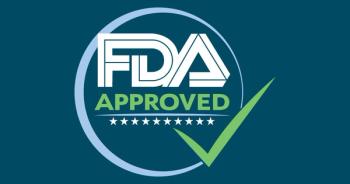
Your Voice
A Puzzler Dosage Correction
We found the Puzzler "Challenging equation: 1 toddler + 1 teen x (irritable and hypertensive) = 2 (D), where "D" is a diagnostic dilemma!" by Dr. Erin Kish and Dr. Anna Myers (December 2005) extremely valuable in teaching us the challenges of managing a patient with mercury poisoning. Although it brought to our attention the intricacies of treatment with the chelating agents, we must point out an important dosage error for the chelating agent dimercaprol discussed in this article. The article stated that "Dimercaprol, also known as BAL, should be administered intramuscularly or IV ...". It should be given only IM, according to the manufacturer's package insert and other independent resources including the Thomson Micromedex Healthcare Series and Drug Facts & Comparisons. In addition, dimercaprol contains peanut oil, and should not be used in the patient with peanut allergy.
Lua Nguyen, PharmD candidate Thomas R. Caraccio, PharmDHoward C. Mofenson, MDMineola, NY
Anna Myers, MDWaco, Texas
Vaccine and Autisum
I share Dr. McMillan's view that the public discussion on autism should be directed toward a search for both cause and viable, accessible treatments (September 2005). As a pediatric nurse and a mother of a child with autism, I believe that a critical point is ignored in the mercury debate: Every child has a unique combination of genes, biochemical variances, opportunities for toxic exposures, and immune system maturation. The American Academy of Pediatrics, medical establishment, and the autism-vaccine injury advocates oversimplify this issue to favor their own position and agenda.
Just as those who fear and blame vaccines for autism run the risk of jeopardizing the health and safety of others by refusing to participate in recommended vaccination programs, a medical establishment on the defensive hinders the advancement of biomedical research toward treating the complex biochemical, genetic, and auto-immune components that may shed light on the clinical set-up for autism spectrum disorder.
I have found nothing in the literature that lays to rest my concern that the variances in biochemistry, genetics, and immune function found through an extensive work-up on my son may have been a factor in his ability to tolerate the vaccination schedule. Could that have contributed to the onset of regressive autism around the age of 15 months? Obviously, we would not work up every newborn to identify those more likely to have an adverse reaction to vaccines, but future advances in gene mapping may allow us to predict biochemical risk factors for this disease.
A pediatrician who encourages parents to adhere to the AAP vaccine recommendations for their children will have more credibility with parents concerned about vaccine safety if he or she is knowledgeable about autism. Pediatricians need to do more than screen for or recognize autism spectrum disorder, they need to join the fight, by reading current research on autism cause, treatment, and interventions; by helping families affected by autism obtain community support, navigate the complex diagnostic work-up, and make treatment decisions.
Pediatricians who provide a true medical home in this complex, litigation-saturated healthcare system have the credibility and mutual trust with families that will allow them to enter into a meaningful dialogue about vaccine safety.
Erin J Keith-Chancy, RN, BSNSt. Petersburg, Fla
Newsletter
Access practical, evidence-based guidance to support better care for our youngest patients. Join our email list for the latest clinical updates.














